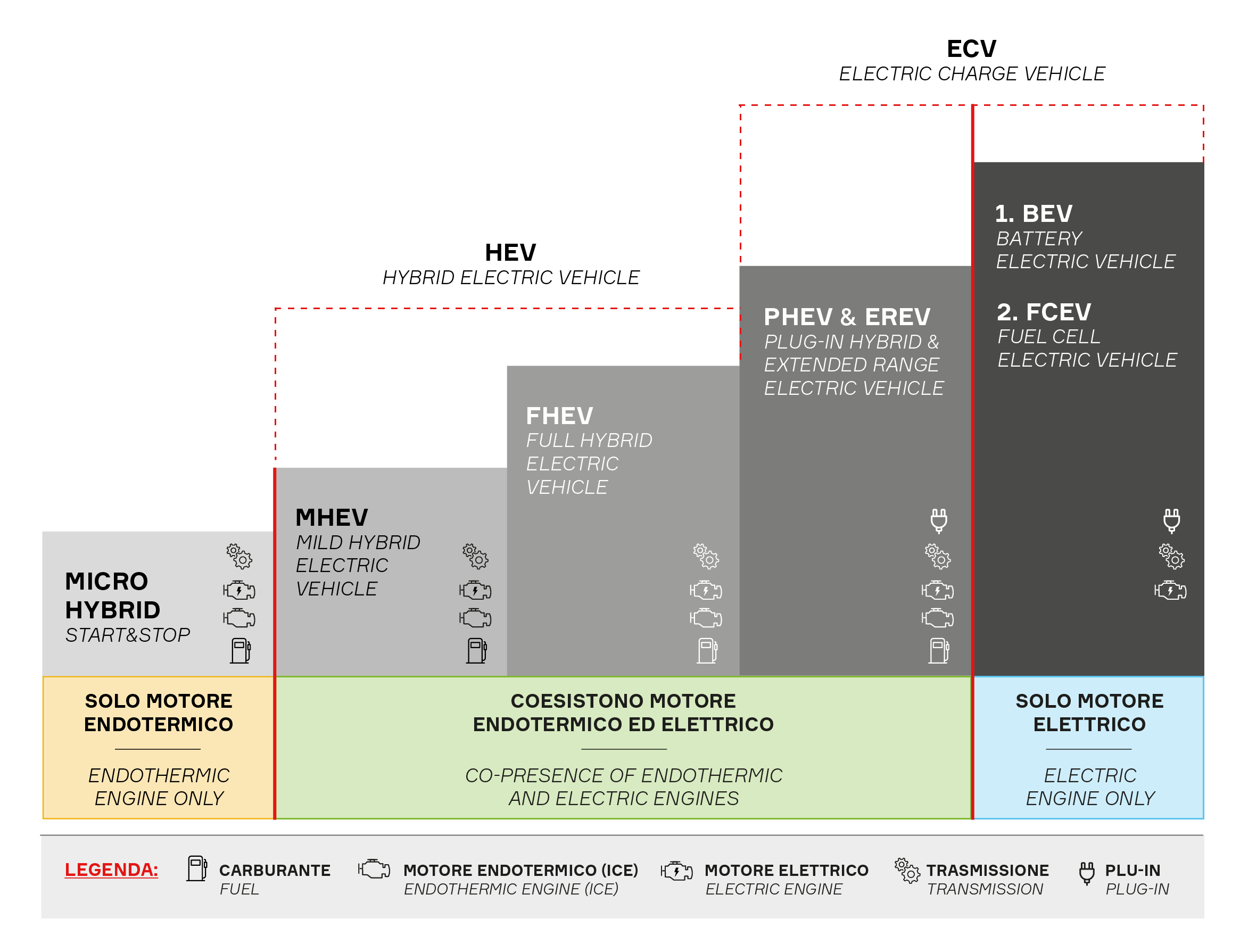Emobility: New Challenges for Lubricant Oil Manufacturers
Future Mobility, what to expect
Auto Trends: The ACES revolution
Never as in these years we talk about mobility of the future. It is often identified with emobility alone, the turning point of electric vehicles, but in reality this is only one aspect of the transformation to be taken into account. In this article we will try to summarize the macro trends that are changing the face of mobility to try to give an opinion on the role that lubricating oils will play in the future of the car market.
To simplify the 4 main trends we use a term used in jargon: ACES, an acronym that means Autonomous Driving (Autonomous Driving), Connected Cars (Connected Cars), Electrified Vehicles (Electric Mobility) and Shared Mobility (Shared Mobility). The Covid-19 pandemic has naturally had an impact on mobility, accelerating some aspects and curbing others, but according to the McKinsey consultancy agency the macro trends remain the same as the pre-pandemia.
Emobility: Yes (But Not Today)
What is meant by Emobility? is a type of mobility that involves the main use of electricity as a "fuel" for the movement of the vehicle. The change has been induced by forced stages to achieve so-called climate neutrality by 2050, the long-term goal ratified in the Paris Agreement (2015). This climate neutrality is substantiated in trying to contain global warming well below +2 ºC at the end of the century (a threshold considered ideal is +1.5 ºC). An important intermediate stage will be in 2030. The European Union has reinforced its commitment to reduce emissions by moving to a target of -40% to -55% compared to 1990. Hence the government incentives for the purchase of hybrid cars and electric cars. According to ACEA data (February 2021) in the last quarter of 2020 one vehicle in six newly registered in the European Union was an electrically rechargeable vehicle (Electrically-Chargeable Vehicle) that includes in the definition: BEV, FCEV, PHEV and EREV. The figure is growing but refers only to new registrations. The European fleet of more than 270 million light vehicles is another story.
The framework of sustainable mobility is quite diverse and, as you can well imagine, the path to emobility is far from simple. The same infrastructure for charging hybrid and electric cars is still largely to be built. So, electric yes, but the coexistence with the endothermic engine and hybrid solutions will still be a long time. We see below a scheme that seeks to clarify the formulas mainly used to describe the world of sustainable mobility:

Micro Hybrid.
It is an improper term because there is no electric motor, but only the endothermic one (ICE - Internal Combustion Engine) and a starter connected to an additional battery that supports the Start & Stop system. Fuel efficiency improves by 5-10%.
MHEV: Mild Hybrid Electric Vehicle or Hybrid Lightweight.
Two motors coexist, where the electric is at the service of the endothermic one. The electric is activated in the situations of higher fuel consumption as in departure. The battery is not charged with an external socket, but by regenerative braking. Fuel efficiency improves by 20-30%.
FHEV: Full Hybrid Electric Vehicle or simply Hybrid.
Copresence of endothermic and electric motor that collaborate independently depending on the driving conditions. The electric motor activates itself when it is more efficient. There is no charging socket. Fuel efficiency improves by 30-50%.
PHEV: Plug-in Hybrid Electric Vehicle or Plug-In Vehicles.
They are equipped with a lower power thermal motor and an electric motor combined with a battery that recharges both in braking and via a power outlet. It has the ability to travel more road than other hybrids in only electric mode.
E-REV: The Extended Range Electric Vehicle.
With auxiliary power unit is considered a form of PHEV. They are hybrid cars but the driving force comes from an electric engine because the endothermic engine (or with fuel cells) intervenes only to charge the battery.
BEV: Battery Electric Vehicle or Electric Vehicle.
You enter the domain of all-electric cars (Emobility) powered by batteries and without internal combustion engine.
FCEV: Fuel Cell Electric Vehicle or Fuel Cell Vehicle.
They are vehicles that convert the chemical energy of hydrogen into mechanical energy by reacting with oxygen a fuel cell that produces electricity. They fall fully within the category of Emobility.
SUGGESTED FOR YOU
-
 Academy
AcademyACEA 2022 Oil Sequences | Heavy Duty
-
 Company
CompanyPakelo’s Export Manager talks about travel, human relations and technical training on oils and lubricants
-
 Formula
FormulaFia Formula 3 Championship: the Feature race was literally dominated by Trident Motorsport
-
 Granturismo
GranturismoDaytona raceway: what happened at the Rolex 24h?
-
 Heritage
HeritageRegularity races: Does It matter more precision or speed?
-
 Rally, History
Rally, HistoryDakar Rally 1990s | A piece of Pakelo Lubricants's Story
-
 Mechanic Gods
Mechanic GodsPakelo Lubricants and Dieci Srl, a collaboration that goes on since over 10 years
-
 Oil trends
Oil trendsBiodegradable, sustainable, renewable: definitions and differences
-
 Oils & More
Oils & MoreLow HTHS oil: how does it affect fuel economy?
-
 Pakelo Heroes
Pakelo HeroesEmiliano Malagoli: Don’t call me “Hero”
-
 Oils & More, Portraits
Oils & More, PortraitsPakelo Lubricants among the food-grade lubricant suppliers for AIA
-
 Rally
RallyAfrica Eco Race 2024 Results – Jacopo Cerutti wins
-
 Travellers
TravellersCamperized off-road vehicles: advantages and tips for travel and adventures, Morocco

SECTORS
DEALERS
SECTORS
© Pakelo Motor Oil S.p.A. a s.u. 2024 - All rights reserved - P.Iva 01876150234 | Credits








